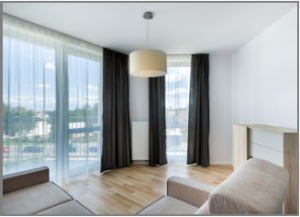Here’s a fun game.
You know how you hear people talking about increasing rental rates and then include numbers like 5% annual increases? See, funny thing. There is a lot more to that story than meets the eye.
Let’s use actual data for our immediate locations, and look at this more closely.
First, let me state that I am specifically targeting smaller units with a focus solely on single family homes and apartments with less than 20 units in my local market place. I am also looking at data that ranges only from 2000 through now, because I feel like the last 15 years are a reasonable indicator of the next 5 to 10 years for planning purposes. These are local, real, researched numbers that mean more to me than a national trend.
According to data provided from Dupre + Scott Apartment Advisors, for rental units specifically between 1-19 units.. the escalation for rents doesn’t look anything like 5%. It looks like 2-3%. (There’s a much more detailed summary on the insert page with specific locations and units.)
Sometimes it can be confusing to listen to “gurus” talk about things when they don’t have any real data. For me personally, it is also a red flag when I hear anyone use a figure like 5% or 10% in their estimates… because I know that’s what I do myself when it’s just a wild guess with nothing to really back it up.

Next time you hear someone talking about how rental rates are bound to increase and they say something like they will estimate “conservatively” at 5% annually… Now, you are able to state that historically, this isn’t true for the Puget Sound Region with smaller single-family and apartment units. Locally we average a 2% annual increase on 2bd/1ba units and a 3% annual increase on 3bd/2ba units. Some locations have seen no growth, some have seen 1-2%, and a couple areas have seen 4-5%. Just like with everything else in real estate, it all depends on the location and property. (In a future issue, we may look at how the increases in housing rental rates for new construction are outpacing existing buildings. For now, we’re just looking at 1-19 units for existing properties in this article.)
For a bonus to our myth-buster segment, you should also note that that during this same time frame from 2000 through now, the Inflation Rate based on CPI (Consumer Price Index—provided by the Bureau of Labor and Statistics) is only 2.18%, so most rents for existing homes and small apartments are only keeping up with inflation.
Also in another future issue, we will address the pink elephant in the room. What is the pink elephant you ask? It is the fact that property taxes and utilities seem to be increasing faster than rents. If you know what the trends have been, then it should be easier to plan for the future. So, what can you do as a landlord to try and protect your profits and rental income in the future? We’ll talk about some ideas that might be beneficial.
Are you looking for more complete data to make a decision? Call me at (206) 293-1005 or email: Jen@HudsonCREG.com.
